- Home
- entertainment
- news
- 6 details you might have missed in the latest episode of 'House of the Dragon'
6 details you might have missed in the latest episode of 'House of the Dragon'
Kim Renfro

- Warning: Spoilers ahead for "House of the Dragon" season one, episode five.
- See which references to "Fire and Blood" and "Game of Thrones" were included in this week's episode.
The cause of death for Lady Rhea Royce was suspicious in the "Fire and Blood" book, but "House of the Dragon" makes it clear that she was murdered by Daemon.
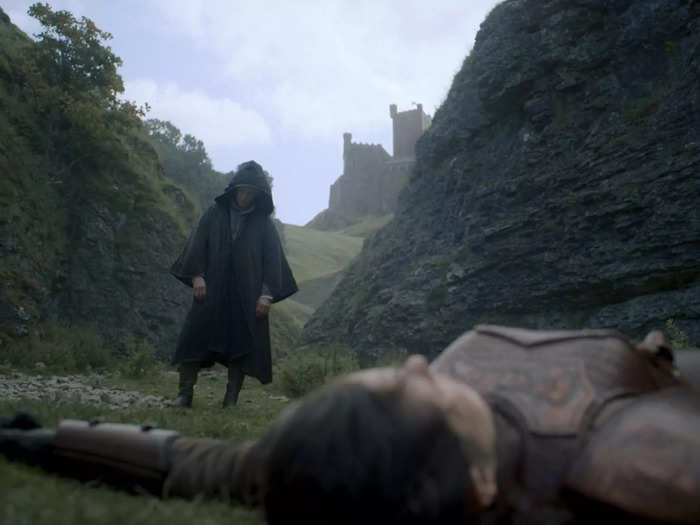
The fifth episode opens with a visit to Runestone, the castle of House Royce where Daemon's wife Lady Rhea lives. This castle is in the Vale, where House Arryn rules. You'll remember them from "Game of Thrones" with Lysa Arryn and her son Robin, who were both manipulated by Littlefinger. Yohn Royce was one of the lords in the Vale who felt distrustful of Littlefinger in "Game of Thrones."
But here in "House of the Dragon," we get a clear picture of Prince Daemon's cruelty and intent to escape his assigned lot when we see him kill Lady Rhea and stage it to look like a "hunting accident."
In "Fire and Blood," Martin's fictional historical account of the incident says Rhea's death was "a tragic mishap."
"The 'bronze bitch' of Runestone, Lady Rhea Royce, fell from her horse whilst hawking and cracked her head upon a stone," the book said, continuing on to say that she "lingered" for nine days before finally dying.
This is just one more example of how the "House of the Dragon" writing team is creating a new (and one could argue, more objective) account of the events in "Fire and Blood." While some fans had always suspected foul play in Rhea's death, the show makes it unambiguous that she was killed in order to further Daemon's personal desires.
Larys Strong makes important moves in this episode, and there may be a magical connection between his presence in the godswood and the events to come.
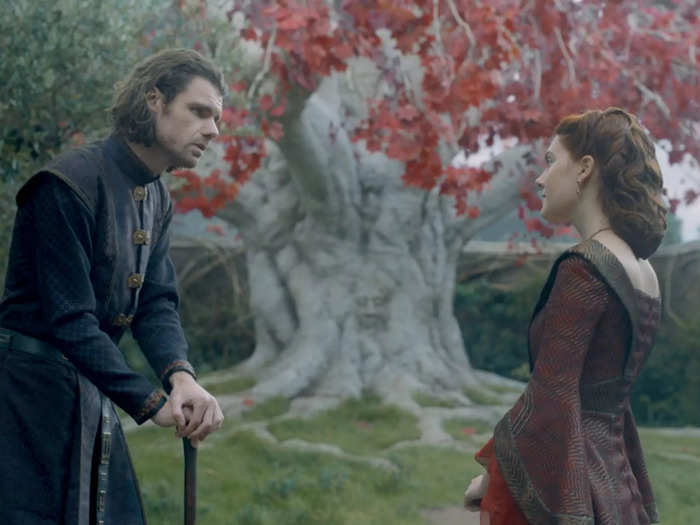
You may have noticed that many pivotal (and seemingly private) conversations in "House of the Dragon" have taken place in the godswood, in front of the weirwood tree.
The presence of this tree has been intriguing for many book fans, since Martin's text has made it clear that the weirwoods in the southern parts of Westeros (including King's Landing) were all cut down. In "Game of Thrones," which takes place about 200 years after "House of the Dragon," we were shown the stump of the weirwood tree when Sansa Stark went to pray in private.
So it felt significant that this series has placed a fully grown, alive weirwood tree in the background of so many scenes — including this one between Larys Strong and Alicent.
House Strong currently holds Harrenhal, the large and formidable castle that was put to ruin by dragonfire before Larys was born. Harrenhal is nearby the Isle of Faces, an ancient and magical place where many weirwoods once stood tall.
As "A Song of Ice and Fire" expert YouTuber @JoeMagician explained in a recent video, there's a chance Larys is actually a greenseer — a powerful spymaster who uses his powers to watch people through weirwood trees and animals.
This is a power we saw Bran Stark start to use in "Game of Thrones," and now we may get more of this magical ability in "House of the Dragon" via Larys Strong.
The show seems to support the idea that Viserys wasn't the one who sent Rhaenyra moon tea — it might have been Larys.
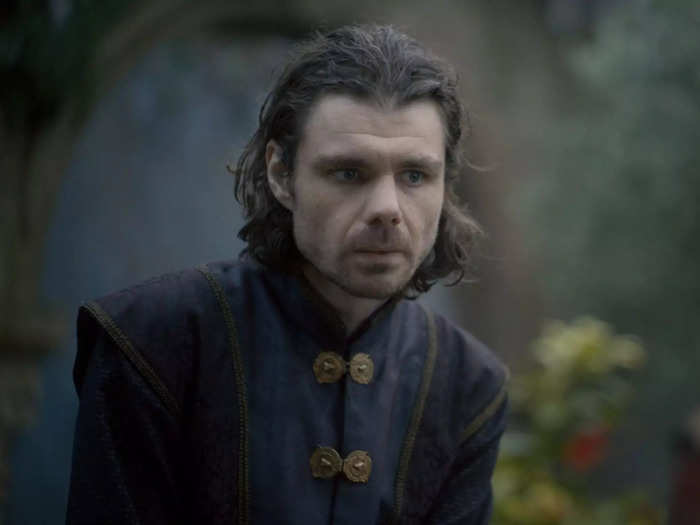
At the end of episode four, Rhaenyra was surprised in the middle of the night when the Grand Maester brought moon tea to her room. The drink helps prevent or abort pregnancies, and the Maester said it was sent by the king. But we never saw Viserys ask for moon tea to be sent to Rhaenyra — so was it really him?
Throughout many of Martin's stories set in Westeros, the deliverance of moon tea to a highborn lady's chambers has been weaponized to spread rumors. The presence of moon tea implies that a woman is having sex outside of marriage, and therefore needs to ensure that she won't get pregnant.
So when Larys turned up to tell Alicent about the moon tea sent to Rhaenyra's chambers, it felt like a big clue that he was the one who sent it. It's true that maybe King Viserys was just covering his bases in case Rhaenyra lied to him (which we know she did), but it would also make sense for Larys to have sent the moon tea so he'd be able to turn Alicent against her friend.
At the wedding feast, a major character from "Fire and Blood" makes an appearance at last.
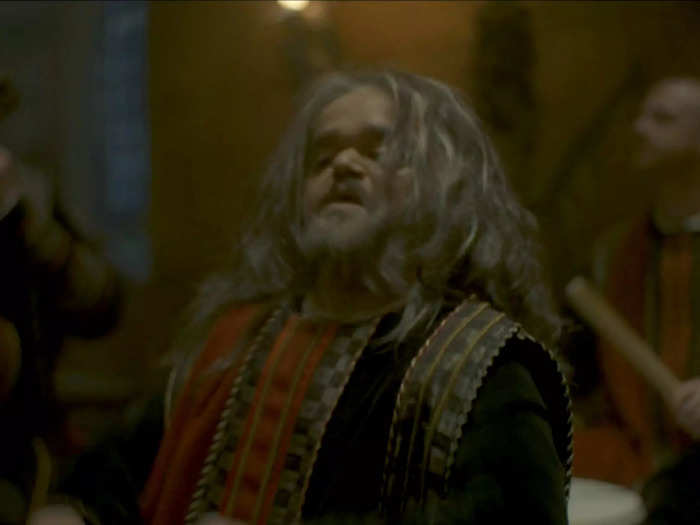
"Fire and Blood" is a fictional historical account of House Targaryen's rule over Westeros, and the events that are cataloged come from a variety of sources within the text. One of those sources is a man named Mushroom, a little person who serves as court "fool."
Mushroom is cited in "Fire and Blood" often, but this is the first time he's appeared in the TV show.
In an interview with Insider ahead of the premiere for "House of the Dragon," actor Paddy Considine (who plays Viserys) said he fought for this book detail to come to life in the show after he read Martin's book.
"The only thing I asked was, 'Can we please have Mushroom at the wedding?'" Considine said. "That was my thing."
He went on to joke about Ryan Condal, coshowrunner and writer of "House of the Dragon," saying Condal would try to claim this idea.
"Don't believe any of them," Considine said with a smile. "That was my idea, thank you."
We saw Rhaenys riding her dragon, Meleys, for the first time in this episode.
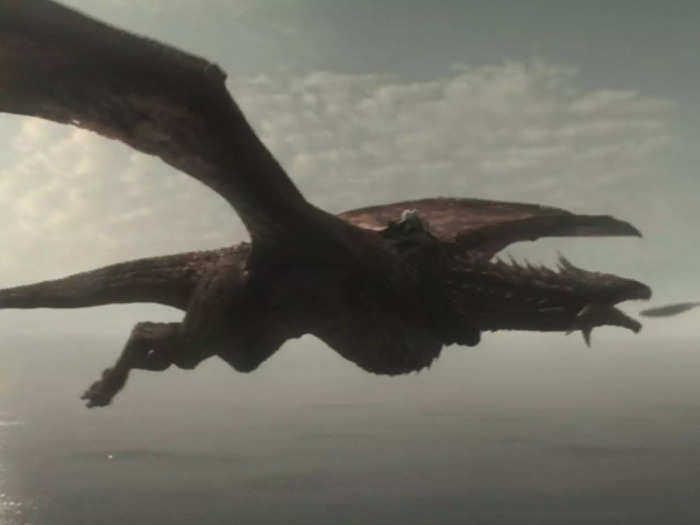
This brings the total dragon count in "House of the Dragon" so far to four. First there was Rhaenyra and Syrax, and then Daemon and Caraxes.
In episode three, we saw Laenor and Seasmoke come to the rescue in the battle against the Triarchy.
Now, we got a glimpse of Princess Rhaenys (who is Laenor's mother and wife to Lord Corlys) on her own dragon named Meleys.
Alicent's turn against Rhaenyra (and even Viserys) seems largely rooted in her sense of piety and honor — though she was manipulated into those values by the men in her life.
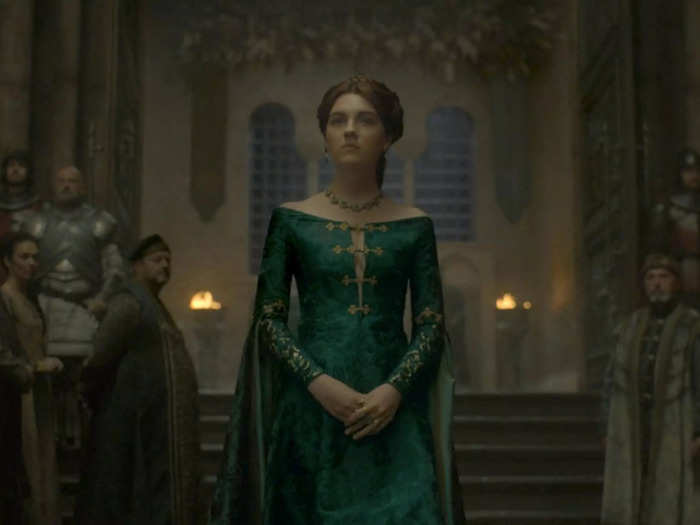
When Alicent arrives dramatically late to the wedding, wearing her own green gown instead of a Targaryen-themed red or black or gold dress, she sets herself firmly loyal to House Hightower and in opposition to what she sees as deceitful behavior from the Targaryens.
Her fallout with Rhaenyra is the result of a tragic series of misunderstandings, miscommunications, and misinterpretations of intentions. "House of the Dragon" is taking the time to show us how Alicent is isolated and traumatized by performing her "duty" to both her own family and the realm. She is scared, lonely, and increasingly resentful of Rhaenyra's seeming freedom to do as she pleases.
Alicent follows the Faith of the Seven, a religion that deems incest (between uncles and nieces, like Daemon and Rhaenyra) and sex outside of marriage as sinful. The Faith makes an exception for Targaryens, since their practice of intermarriage is born from a desire to preserve the dragonriding bloodlines of Valyria.
The themes of patriarchy and women's agency run strongly throughout "House of the Dragon" so far, and Alicent is emblematic of the internalized misogyny that some women feel towards people who are trying to dismantle the systems of oppression.
Alicent is made to resent Rhaenyra's presumed "freedom" from the duties the Alicent was forced into at a young age. And that resentment is only going to fester as the story continues.
For more on "House of the Dragon," read our analysis of the stag hunt scene and other details you might have missed this season.
Popular Right Now
Popular Keywords
Advertisement